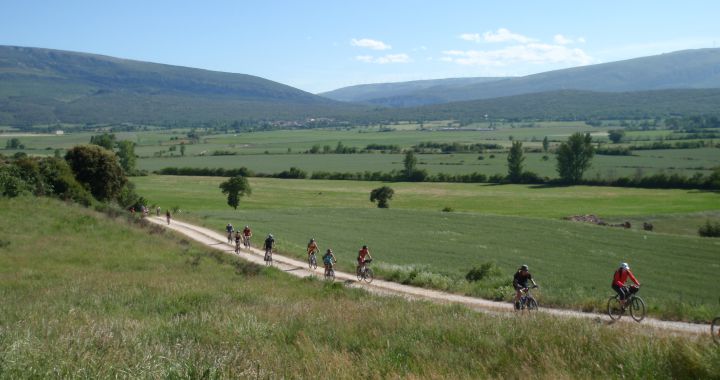“It was a unique experience, which we were also able to live as a family”. Susana and her companion José have just returned from a weekend during which they traveled part of the Ojos Negros Greenway, the longest in Spain, which connects Teruel and Valencia for almost 170 kilometres. They chose to cover the last stretch, about 75 kilometers, through Valencian orchards and to the shores of the Mediterranean. “We were with our 8-year-old daughter and we didn’t want it to be too hard on her. But in the end, he wanted more,” says José. “We will repeat, of course.”
The Greenways are one of the crown jewels for cycling and hiking enthusiasts. And despite this, they are still very little known to a large part of the Spaniards. Its origin dates back to 1993, when the Vías Verdes Foundation was created. His goal: to recover old disused railway tracks to convert them to routes for non-motorized vehicles. A real pole of attraction for cyclists and hikers who wish to travel differently and above all at a different pace.
Currently, Spain has 129 greenways, which extend along more than 3,300 kilometers. Of all of them, the longest is the aforementioned greenway of Ojos Negros, but there are many others: the greenway Senda del Oso (Asturias) is, for many, one of the most beautiful. The Vía verde del Tajuña (Madrid), one of the busiest given its proximity to the capital and its affordable length (49 kilometers). The Vía verde del Aceite, between Jaén and Cordoba, a “must” for lovers of our liquid gold and Andalusian landscapes. And many more: the Carrilet Greenway (Catalonia), the Northwest Greenway (Murcia), the Eresma Valley (Valladolid), the Vasco Navarro Railway (Basque Country)… To discover them all, nothing like letting yourself go on the official website of the project. https://www.viasverdes.com/
cycling paradise
The potential is still immense. It is estimated that in our country there are about 7,500 kilometers of disused railway lines. In other words, 7,500 additional kilometers of potential greenways with which to transform the Peninsula into a real paradise for cycling enthusiasts, an activity that continues to grow. With an increasingly conscious society sustainable tourism, nothing like cycling to discover the corners and paradises nearby with a pedal stroke.
“The potential of greenways is incredible,” says Chus Blázquez, head of Rutas Pangea and one of the people who knows the area best, in a conversation with LOS40’s El Eco. cycle tourism in Spain, with three decades of experience in organizing bicycle trips. Also, someone who devoted himself to promoting his virtues and contributed decisively to his growing popularity.
“The basic concept of Vía Verde, of running along an old railway line, gives us many facilities thinking in terms of cycling,” explains Chus. “It’s a line with very little elevation, with bridges when you have to cross a river or tunnels to cross mountains. walk several times very attractive scenery and giving us access to magical places. And always recovering a historical heritage that would otherwise continue to be abandoned, reminding us of a dream that was cut short. Stations that are now hotels, inns or canteens. Bicycles traversing forgotten paths, tunnels reopening after decades of abandonment…” The greenways are a journey through time aboard a vehicle which, for many, represents the future of mobility.
To walk a greenway is an unforgettable experience. And for those who, like Chus, have been through them all, staying with just one is a nearly impossible task. “It is very difficult to choose a single Vía Verde to recommend,” he admits. “Among the longest there are very attractive options for several days on the route: the Vía Verde de Ojos Negros and the Vía del Aceite, two that grow and are beautiful, the Santander-Mediterranean and La Plata, and some shorter but spectacular like the Vía Verde de la Sierra, that of Val de Zafán and the Senda del Oso”, he concludes. Like everything, to taste the colors. But in this case, green always means an unforgettable experience.

